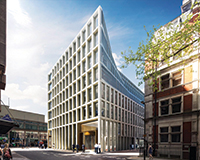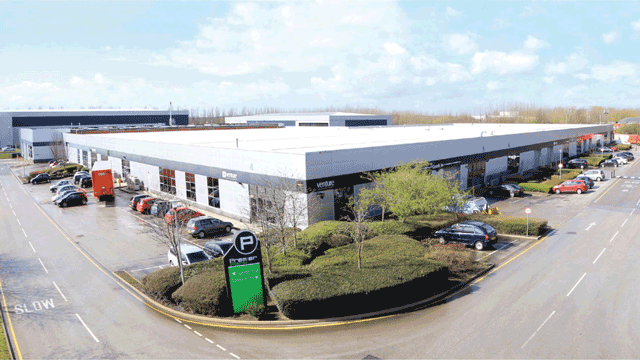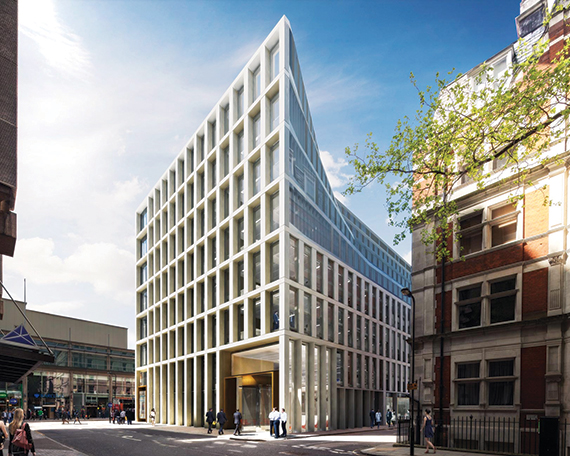 Staid, leafy and academic, Bloomsbury is set for a transformation as the Bedford Estates, the area’s largest landlord, brings in new uses, new spaces and trendy occupiers that will help sustain higher rents
Staid, leafy and academic, Bloomsbury is set for a transformation as the Bedford Estates, the area’s largest landlord, brings in new uses, new spaces and trendy occupiers that will help sustain higher rents
“I have got this slightly crazy idea that we can have something like Boxpark for Bloomsbury.”
Simon Elmer, the new steward for the Bedford Estates, the largest private landlord in the area, is outlining his vision for a part of central London more associated with leafy squares, the British Museum and students.
“We have looked at the potential for garage conversions into small [retail or office] units,” says Elmer about how that Boxpark idea might materialise.
It might sound far-fetched, but the Bedford Estates is looking to put the area more firmly on the map.
The 30-acre estate, which has been owned by the Russell Family since 1669, is valued at around £570m. It comprises 170 buildings housing 800 occupiers, and generates a total rent roll of £25m pa (see below).
While far from being a contender for London’s most vibrant office district or a foodie destination, Bloomsbury is making its mark in a more subtle way.
Five years ago the estate embarked on a £7m regeneration of the buildings on Store Street, WC1, which connects Tottenham Court Road and Gower Street. Space was refurbished and then leased to funky chains and independent operators such as Life Goddess, Decadence Salon, Foote’s Music and Cloud 9 Bicycles.
The street now has its own website and rents have risen by 50%.
A big market the estate wants to tap into is University College London’s 50,000 students. “I want to see how we can work together with the university to make Bloomsbury work for its students,” says Elmer.
Elmer, who took the helm in March this year, joining from the Grosvenor Estate, is hopeful of being able to replicate the success of Store Street in other areas of the estate, as well as tackling its office stock.
With the university on the doorstep, there is a talent pool for businesses to exploit if they can find the right sort of space.
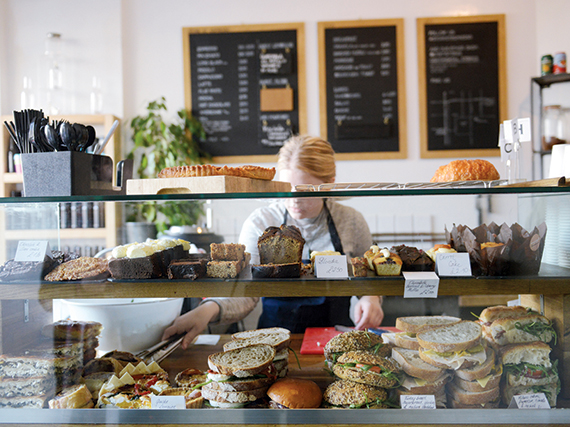 Infrastructure improvements can only help as transport links become increasingly important for businesses trying to attract the best staff. From next year, Crossrail trains will start running on sections of the Elizabeth Line, which has a station at Tottenham Court Road. A major redevelopment of Holborn Station on the Central Line is on the horizon. And Camden has a £41m re-routing project that will change the one-way systems on Gower Street, Bloomsbury Street and Tottenham Court Road into two-way, tree-lined streets.
Infrastructure improvements can only help as transport links become increasingly important for businesses trying to attract the best staff. From next year, Crossrail trains will start running on sections of the Elizabeth Line, which has a station at Tottenham Court Road. A major redevelopment of Holborn Station on the Central Line is on the horizon. And Camden has a £41m re-routing project that will change the one-way systems on Gower Street, Bloomsbury Street and Tottenham Court Road into two-way, tree-lined streets.
The estate has already let to trendy serviced office providers such as the Collective. And to attract a wider variety of tenants, it has embarked on two major office projects and a programme of refurbishment across its assets. The refurbished 60,000 sq ft Heals Building provides small suites for occupiers such as Netflix, Deliveroo and Liverpool Football Club.
One Bedford Avenue, a 84,000 sq ft mixed-use scheme developed in partnership with Exemplar and Ashby Capital, provides floorplates of up to 11,000 sq ft for large businesses. It is due to complete in March next year.
Headline rents on the estate have risen to around £60 per sq ft.
Elmer says: “I wouldn’t see the estate changing visually. Just as Howard de Walden’s anchor tenants are in medicine, ours are in education and I don’t think we should look to change that. But I would like to see a tenant mix to make the estate more vibrant.
“We are speaking to an artificial intelligence company, which is a shift for us. While there is a bit of risk attached to these smaller companies, which don’t have the economies of scale, there is something to be said about fostering start-ups.”
Elmer also aims to also make Bloomsbury’s hotels more proactive in branding, inviting destination restaurants and bars to set up inside them.
“If you lived here and wanted to eat, you probably wouldn’t eat in Bloomsbury. You would go to Charlotte Street, Soho, the City, or Mayfair,” he says. “What would be great is to have that all-day dining offer.”
Much of the estate’s income is generated by residents and Elmer also realises the importance of developing more three- and four-bedroom properties for a family-friendly feel.
For Elmer, the biggest challenge will be learning the estate. “My predecessor, from whom I had a fantastic handover, had been here 24 years. You learn a lot in that time, and trying to absorb everything has been quite a task.”
Nevertheless, other industry figures are confident he can do the job.
Alistair Subba Row, senior partner at niche advisory firm and Midtown specialist Farebrother, works as a strategic adviser to the neighbouring Holborn Links Estate.
He says: “The conversations that I have had with Simon are on message in terms of developing a cohesive strategy for the Bloomsbury area, not just the estate. He is a very inclusive new steward who will work closely with other stakeholders.
“Perhaps one of the exciting challenges is to bring them all together. The success of this vision will also be in the collaboration of Camden Council – which now has four business improvement districts.”
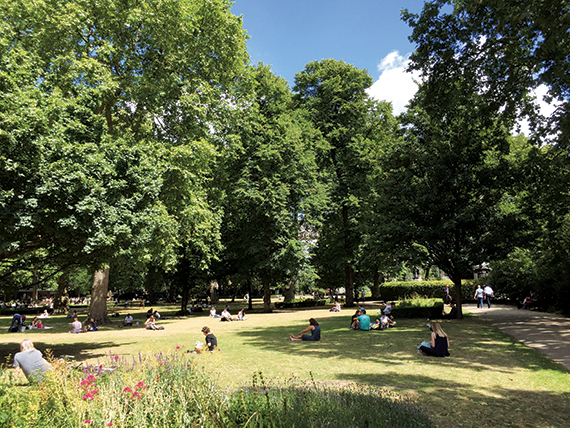
Elmer jokes that while his career has been largely broken up into seven-year stints, he would like this role to be his grand finale. “I promised my wife this will be the last one. I’m 52 now so I would really like to see this one through. It is such a great location. There is so much we can do. I think it will always be that hidden gem and I don’t have a problem with that,” he says.
The excitement he feels is clear. “I think the first thing is to have a really firm view about what it is you want to achieve and after four-and-a-half months I have started to form that.
“I know people sometimes have this image that vast ownership is not good, but actually it can deliver huge amounts of value to people that live there. One of the attractions here is exactly that. The Bedford Estates and the Russell family are huge believers in protecting our estate, to maintain it in the best possible way and enhance it for future generations.”
What the occupiers think
Brett Steele, director of the Architectural Association, says the beauty and history of Bloomsbury owes its legacy to the estate’s stewardship. He says: “Decades ago, the Architectural Association, like its setting, was something of an outlier in London. The transformation of London over the past 20 years has elevated the presence of Bloomsbury, which is now sought out as not just a tourist destination but also as an unparalleled location for businesses, schools and even some lucky residents.
“The challenges ahead for Bedford Estates are managing the consequences of ever-increasing costs of living, rent, and livelihood.”
Slava Bulatovic, director and owner of Decadence Salon on Store Street, says: “I think it is one of the prettiest streets in London and we are seeing it get busier. Though the Estates does a lot to promote Bloomsbury, I think it would be great if someone could shout about the street from a megaphone. Maybe Bedford Estates could advertise it like a village street.
“I think it is on par with, if not prettier, than Charlotte Street, but it has to be a destination, otherwise people don’t know it’s there. It would be great if there was a walking route directing people from the Tube.”
Estates facts
• The Bedford Estates began developing and managing much of Bloomsbury, including the development of parts of Covent Garden, in 1669
• The estate is valued at £570m and has a rent roll of £25m
• The company has invested more than £50m in commercial, retail and public realm regeneration over the past 10 years
• Retail values have increased by 50% since the placemaking initiatives began
• Top office rents on the estate have increased by at least 25% in the same period to around £60 per sq ft







